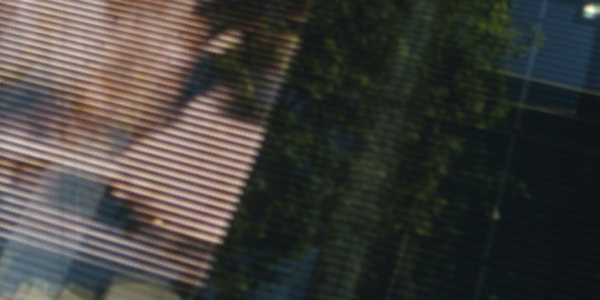Your cart is currently empty!
Field Report

“A new thing, a spring later, a different maker” are the words moving-image artist Nathaniel Dorsky uses to position Colophon (for the Arboretum Cycle), 2018, his newest work which investigates light and objecthood. The film, which premiered at the 2018 Toronto International Film Festival, functions partly as an off-shoot of his 2017 Arboretum Cycle, a series of seven short films depicting San Francisco’s Strybing Arboretum through a life cycle of garden florae, from spring’s birth to winter’s death.
Designed as distinct and separate, however, Colophon demonstrates the next phase of Dorsky’s interest in and investigation of the essential attributes of light, nature, and their sculptural properties. In many of his works, Dorsky frequently reveals his subjects by shifting the camera’s aperture back and forth, allowing the subject to move forward from the dim, murky shadows. Coupled with the absence of overlaid sound and his signature projection speed of just 18 frames per second—a frame rate just above the lower threshold for our eye to see movement between images—the transformative abilities of light grasp the viewer and move us towards the transcendental.
Though Colophon spends much of its 13-minute runtime engaged with nature and light in terms similar to those established by Arboretum Cycle, it opens its unique three-section structure with a discernable and marked departure—a cinematic focus not based in the garden, but in the city streets.

With our sights fixed on the city’s reflections in an unmarked pane of glass, the unnatural patterns of light produced by the cityscape are accentuated. The pane of glass is both in and out of focus—it reflects its surroundings, but its own presence is made invisible. The camera operating a single aperture, the pulsating light no longer comes from Dorsky’s own mechanical manipulations, but instead from the environment which surrounds him. Artificial light and the reflection of passersby paint the surface of the pane of glass, shallow in texture, marking a stark contrast to that of the sunlight which washes over the flowers and shrubbery of the work’s next sections.
The bright sunlight of these latter two phases of the work is the primary tool Dorsky uses to manipulate exposure and color of the images captured by the camera-eye. Approaching the hallucinatory, the texture of the image is reclaimed by the mechanics of the camera, as opposed to the mechanics of the city streets.
In Latin, the word “colophon” roughly translates to a “summit” or “finishing touch,” and has been used frequently in publishing to provide the contexts of a work after its completion by the author. Perhaps Dorsky’s intent is to assert that an investigation of the visual properties of nature cannot be complete without surveying the unnatural. The mechanics of the streamlined, motorized and technological city produce different manifestations of light and image. To understand the true, essential characteristics of natural landscape and its objects, one must be confronted by light as refracted by man-made objects, including the camera itself. In his “finishing touch,” Dorsky reveals the camera’s unique ability to see objects—man-made or natural—for what they are.